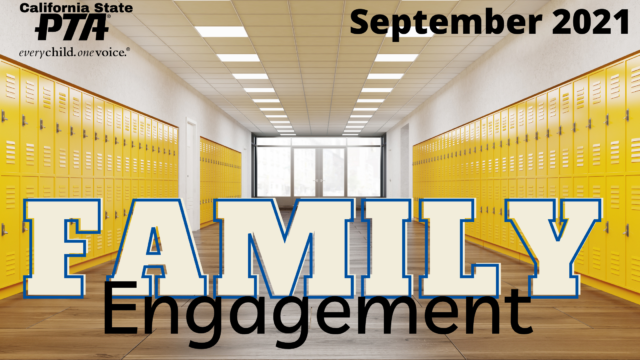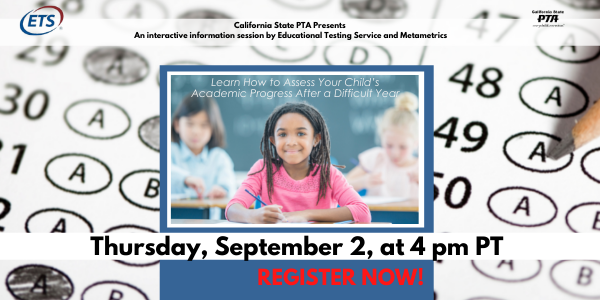 This article was provided by our sponsor ETS. Read more about ETS here.
This article was provided by our sponsor ETS. Read more about ETS here.
State tests are underway and like this school year when learning is different—whether your child is in a school, learning at home, or both—the tests are also different.
We recognize that the COVID-19 pandemic that prompted sudden school closures has created a very challenging learning environment not only for students, but also for parents and teachers. We applaud the hard work, sacrifices and efforts made by families and teachers to help ensure that students continue to learn and progress in their academic career. There is no doubt that the COVID-19 closures have caused learning gaps, which is why it is more important than ever to measure student learning to understand the impact the pandemic and the different learning environments have had on students.
This year, districts have the option to give the California Assessment of Student Performance and Progress (CAASPP) either remotely or in person. The English language arts and mathematics test are shorter than in previous years to decrease stress on students and time it takes away from valuable instruction. School districts will also have more time to administer the assessments. The results of the tests are going to be used for learning only. They will not be used to rate schools but to help identify where leaning loss has occurred and provide the state, teachers, and parents with this very important data to help make decisions on how to best help student catch up.
All the test subjects, in addition to ELA and math, administered under CAASPP are available this year as well as the tests administered to English learners. Most of these tests are available remotely or in person. However, if your child qualifies for the alternate assessments, these tests will need to be given in person because these tests require one-on-one administration with students so they can better demonstrate what they know and can do.
Below is a list of available tests, who takes them, how they are administered, and timeline. Check with your child’s teacher for more information about your child’s testing schedule and which tests they need to take. Parents can also visit the CAASPP/ELPAC website for more information, including instructions and videos on how to prepare for testing at home and practice tests.
Smarter Balanced English Language Arts (ELA) and mathematics (shortened version)
Results for this test will only be used to get information on how to help students.
- Who takes the test: All students from grades 3-8 and 11 except students participating in the California Alternate Assessments (CAAs) for ELA and mathematics and ELA only for English learners in U.S. schools less than 12 months.
- How it’s administered: In-person or remote, depending on school district.
- Testing period: February – July
- When parents can expect their child’s score report: July 2021
California Alternate Assessments (CAA) in English language arts and mathematics
Results for this test will only be used to get information on how to help students.
- Who takes the test: Students with the most significant cognitive disabilities whose active individualized education program (IEP) designates the use of an alternate assessment
- How it’s administered: In-person only
- Testing period: January – July
- When parents can expect their child’s score report: September 2021
California Science Test (CAST)
Results for this test will only be used to get information on how to help students.
- Who takes the test: All students in grades 5 and 8, and once anytime in high school, except eligible students participating in the CAA for Science
- How it’s administered: In-person or remote, depending on school district
- Testing period: January – July
- When parents can expect their child’s score report: July 2021
California Alternate Assessments in Science
Results for this test will only be used to get information on how to help students.
- Who takes the test: Students with the most significant cognitive disabilities whose active IEP designates the use of an alternate assessment, for grades 5 and 8, and once anytime in high school
- How it’s administered: In-person only
- Testing period: September – July
- When parents can expect their child’s score report: TBD
English Language Proficiency Assessment for California (ELPAC) (Initial and Summative)
Results of this test are used to identify English learners and to reclassify EL status
Initial ELPAC Listening, Speaking, Reading and Writing
- Who takes the test: K-12 students whose primary language is not English as indicated on the Home Language Survey; administered within 30 calendar days of enrollment
- How it’s administered: In-person or remote
- Testing period: All year
- When parents can expect their child’s score report: As soon as the student takes the test
*Summative ELPAC Listening, Speaking, Reading and Writing
- Who takes the test: K-12 students who have been identified as English learners and participate annually until reclassified fluent English proficient
- How it’s administered: In-person or remote
- Testing period: February – July
- When parents can expect their child’s score report: June 2021
*Students who took a locally administered alternate assessment of English proficiency will continue to receive a Summative ELPAC student score report.
California Spanish Assessment
This is an optional test for native English-speaking students who want to demonstrate proficiency in Spanish language.
- Who takes the test: All students in grades 3-8 and high school who want to demonstrate Spanish reading and language arts
- How it’s administered: In-person or remote
- Testing period: January – July
When parents can expect their child’s score report: September 2021
To return to the blog homepage, click here.


 This article was provided by our sponsor ETS. Read more about ETS
This article was provided by our sponsor ETS. Read more about ETS